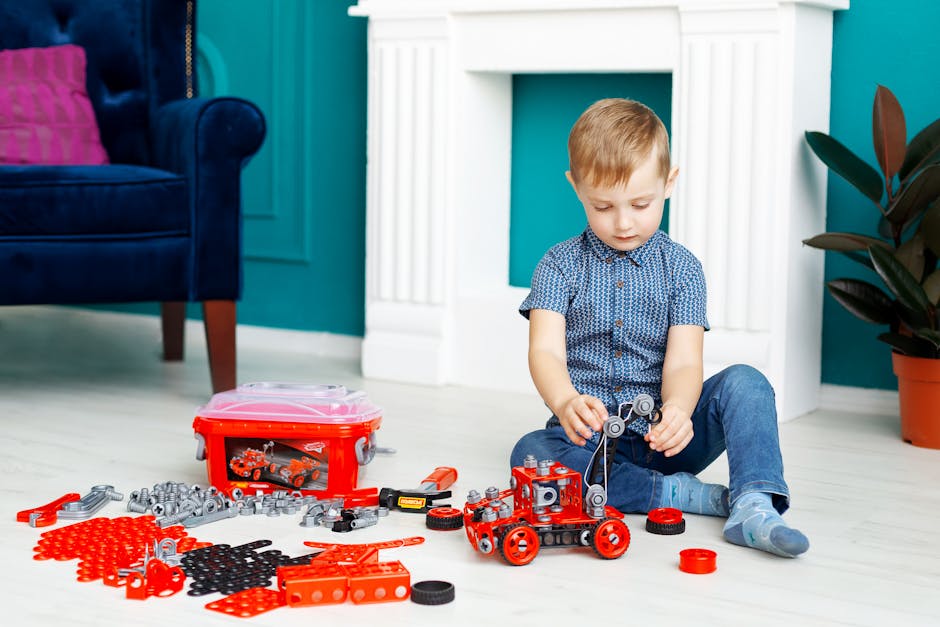Why Emotional Growth Matters
Emotional growth isn’t something to tack on later—it’s foundational. A child who learns to name their feelings, manage frustration, and read others’ emotions is building tools that last well beyond childhood. This kind of emotional intelligence doesn’t just help them get along with friends or listen better in class. It’s linked to long-term mental health, better stress management, stronger relationships, and even career success.
What’s more, this growth starts early. Kids who feel safe, seen, and supported at home are more likely to develop resilience and empathy—the kind of traits that help them bounce back when life gets hard. These aren’t “soft” skills. They’re key to leading a grounded life.
We put a lot of focus on academics, and for good reason. But emotional development deserves the same weight. Just like reading or math, skills like self-awareness, patience, and kindness have to be nurtured. They don’t come automatically. Ignoring emotional growth means risking a future where kids succeed on paper but struggle to cope inside. It’s not either-or. It’s both.
Recognizing the Stages of Emotional Development
Understanding your child’s emotional growth starts with knowing what’s typical at different stages. While every child is unique, there are common milestones that can help you track their development and know when to offer extra support.
Emotional Milestones by Age Group
Infants (0–12 months)
- Display basic emotions like joy, anger, and fear
- Begin bonding with caregivers through facial expressions and tone of voice
- Seek comfort when upset
Toddlers (1–3 years)
- Start expressing more complex emotions like embarrassment or frustration
- Experience frequent mood swings or tantrums
- Begin showing signs of empathy, such as offering a toy to comfort someone
Preschoolers (3–5 years)
- Start identifying their own feelings and naming them
- Show increased interest in how others feel
- Learn to manage small disappointments and conflicts with guidance
School-Age Children (6–12 years)
- Develop a stronger sense of self and fairness
- Can begin to regulate emotions more independently
- Value peer relationships and social acceptance
Teens (13–18 years)
- Experience more intense emotional highs and lows
- Seek identity and independence, sometimes conflicting with family values
- Benefit from open dialogue and emotional support as they navigate mental and social pressure
What’s Normal vs. What Needs Attention
It’s normal for children to have emotional ups and downs. However, consistent patterns of withdrawal, aggression, severe anxiety, or regression may suggest they need more support.
Watch for:
- Persistent sadness or irritability
- Difficulty interacting with peers
- Strong resistance to daily routines or change
- Outbursts that go beyond typical tantrums for their age
Let Feelings Flow—But With Support
Children need the freedom to experience and express their emotions. Suppressing feelings doesn’t build resilience—processing them does. At the same time, they also need guidance on how to handle emotional situations in healthy ways.
Balance is key:
- Allow space for frustration, tears, and joy without immediate correction
- Gently coach children in naming and navigating emotions
- Provide consistent, calm responses to model healthy emotional habits
Recognizing where your child is emotionally—and responding appropriately—is one of the most powerful ways to support their growth.
Creating a Safe Emotional Environment
Solid emotional growth starts with feeling safe. That means structure. Consistency in routines and boundaries helps kids feel grounded. They know what to expect, and that predictability gives them space to explore emotions without spinning out. Dinner’s at six. Bedtime routine doesn’t shift every night. When the basics stay steady, kids don’t have to guess where the floor is—it’s just there.
But it’s not just about logistics. Kids absorb more from what you do than what you say. Show them it’s okay to feel anxious, frustrated, or sad by naming your own emotions plainly. “I’m feeling overwhelmed right now, so I’m taking a few deep breaths.” That teaches emotional fluency better than ten lectures ever will.
And when they come to you with their big feelings—resist the fix. You don’t need to solve it all. Instead of “Don’t cry, it’s not a big deal,” try “That sounds really hard. Do you want to talk about it more?” Your job isn’t to erase the emotion—it’s to create space for it. In that space, emotional growth begins.
Tools to Nurture Emotional Skills
You don’t need a psychology degree or a Pinterest-perfect schedule to help your child grow emotionally. It starts small and simple. Things like taking turns during a game, talking about how characters feel in a bedtime story, or asking, “How would you feel if that happened to you?” build empathy without needing a deep lecture. Let your kid help solve daily challenges—packing lunch, fixing a broken toy, planning a sleepover. Problem-solving in real life builds confidence fast.
Language matters too. Kids can’t manage what they can’t name. When your child says, “I’m mad,” you can offer more: “Sounds like you’re frustrated because your tower fell down.” That’s emotional vocabulary. It helps them link what they feel to real words—and that alone lowers the temperature of most breakdowns.
Storytelling and role-play are underrated tools. Set up a pretend grocery store or let your child play the ‘teacher’ for a few minutes. These spaces are safe for trying on emotions. They get to experiment—angry teacher, bossy store clerk, nervous student—and work through what those feelings mean without real pressure.
None of it has to be fancy. But it does have to be steady. The goal isn’t to fix your child—it’s to give them regular, low-pressure ways to understand people, starting with themselves.
Encouraging Open Communication
Good communication with your child doesn’t start with a lecture. It starts with questions—and how you ask them matters. Instead of “How was your day?”, try “What was the best part of your day?” or “Was there anything that made you feel frustrated today?” Open-ended questions do the heavy lifting. They give kids room to reflect without pressure. Keep it simple, curious, and non-judgmental.
When emotions run high, resist the urge to shut things down. Kids yell, cry, get silent—not because they’re trying to be difficult, but because they don’t have the tools yet. Your job isn’t to stop the storm—it’s to anchor through it. Stay calm. Validate what they’re feeling, even if you don’t agree with the content. “That sounds really upsetting” is better than “You’re being dramatic.”
Trust isn’t built in big moments. It’s earned in daily ones. When your child sees that you stay steady, even when they wobble—they start to believe it’s okay to be honest. They speak up when it’s small, which makes it more likely they’ll speak up when it’s big. That’s the goal: not perfect conversations, but honest and safe ones over time.
When to Seek Extra Help
Not all emotional struggles are part of a typical phase. Sometimes, your child may need support beyond what you can provide at home—and that’s okay.
Here are some signs to watch for:
- Persistent sadness or irritability that lasts for weeks
- Sudden withdrawal from friends or activities they once enjoyed
- Difficulty sleeping or changes in eating habits
- Frequent emotional outbursts that feel disproportionate
- Ongoing worries, fears, or obsessive behaviors that interfere with daily life
- Talking about self-harm or running away, even casually
If any of these show up, don’t wait. Early support can change the trajectory of a child’s development. Therapy isn’t a failure—it’s a tool. And early intervention isn’t drastic; it’s just a smart step. Many therapists working with kids use play, art, storytelling, or movement to connect—no couches or heavy conversations unless the child is ready for them. It’s about making space for feelings they don’t know how to navigate alone.
As a parent, your first move doesn’t need to be perfect—it just needs to be proactive. Start with your child’s school counselor, your pediatrician, or a local mental health clinic. Many offer free consultations or sliding-scale options. National organizations like the Child Mind Institute, Mental Health America, and local parent groups also provide tools and guidance.
You’re not alone in this, and your child doesn’t have to walk it alone either.
Final Thoughts
There’s no finish line when it comes to a child’s emotional growth. It doesn’t wrap up neatly at a certain age. Instead, it unfolds—in layers, setbacks, and small wins—over time. The job as a parent isn’t to shape a perfectly balanced human by age ten. It’s to show up. Regularly. Especially on the slow days.
That means being present through tantrums, awkward questions, and all the little moments in between. Some days, just listening is enough. Other days, you’ll be guessing your way through a complicated emotion your child can’t name yet. That’s normal. Emotional growth is messy, and so is parenting.
The key is to keep learning. Adapt with your child. What worked last year might not fit anymore, and that’s fine. Staying flexible and tuned in beats having all the answers.
For more insight on conscious parenting and tips tailored to where you and your child are now, visit MomSmartHub.


